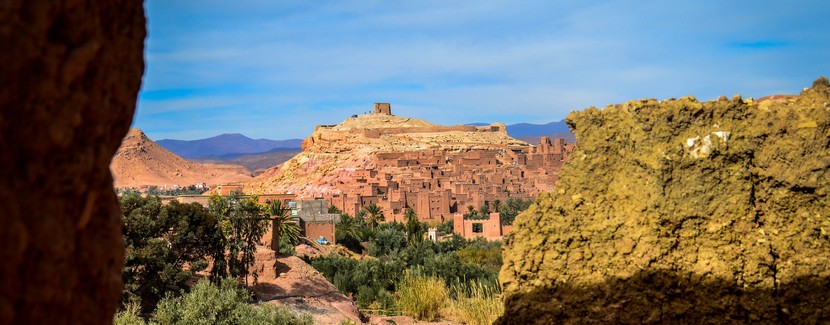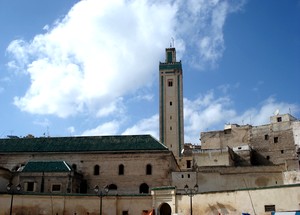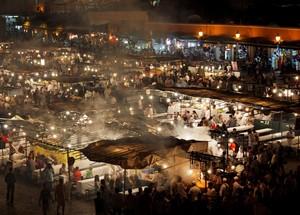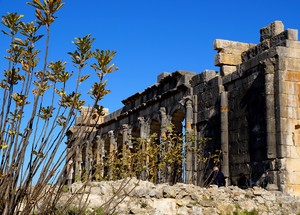Ait Ben Haddou village, or the Kasbah of Ait Ben Haddou, is an adobe village located 30 kilometers from Ouarzazate city. It’s a fortified village, bulwarked, supported by towers at its corners and perforated with a gate. This enormous fortification is composed of many Kasbahs, a mosque, several houses, stables, and a yard in which occasions are held. There’re also shops for presents and relics for those who like to keep a memento of their visit. On the periphery of the Kasbah exist some threshing machines, olive, almond and palm trees, which are irrigated with the water of Ounila valley, one of the main reasons why that place was chosen to construct the village. In fact this place was picked out very smartly as many factors were considered. As a castle, nothing could have been more secure and allowing to watch every single movement around than being built on a hill, especially that just down the hill runs a brook. The later ensured a good living source.
According to some historians, it dates back to the 18th century, but oral narration, the main source of information despite the absence of written texts and documents, indicates that the first appearance of the village was in the 11th century. Until several years ago it had been a caravansary for trade caravans linking Ancient Sudan to Marrakesh. Ait Ben Haddou is and always will be such a striking example of Moroccan earthen architecture that still preserves its architectural design and protects its precious decoration style, standing firm and proudly against erosion caused by rain, wind and cultural changes. The fascination of this castle and its harmony with nature have attracted the attention of many movie directors and many movies were shot there, including: The Message, Jesus of Nazareth, The Mummy, Gladiator, Alexander, Son of God...
Since 1987, Ait Ben Haddou has been a UNESCO World Heritage Site to which journeys are sallied forth wishing to have a close view of this Site and discover, at least, a slight aspect of its history hidden along its winding streets, in its joists that bore the ceiling weight for centuries, up the high building and towers, down the trails, and most importantly within the inhabitants’ souls who preferred-despite the departure of the majority-to stay, maintain the stability of their ingrained habits, and live the way their forefathers had lived, peacefully and silently amid the walls that assemble social, educational, economic and spiritual constituents of life the Kasbah needs as a world unto itself.






